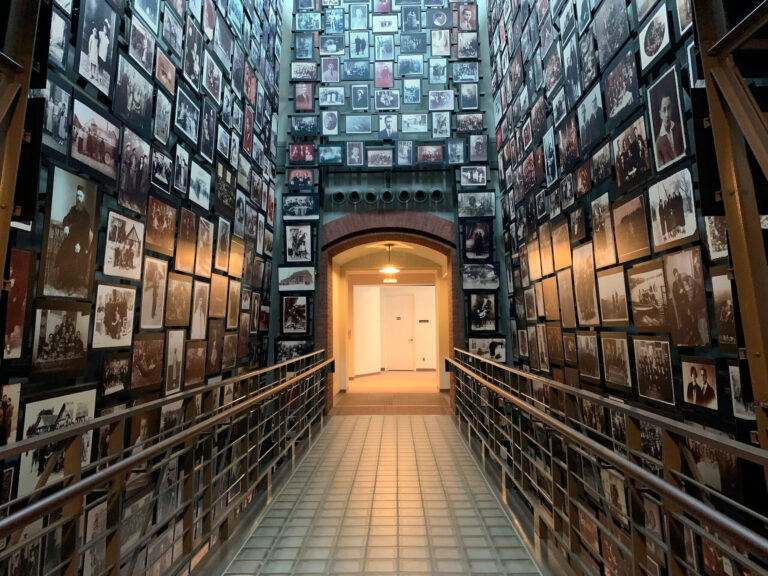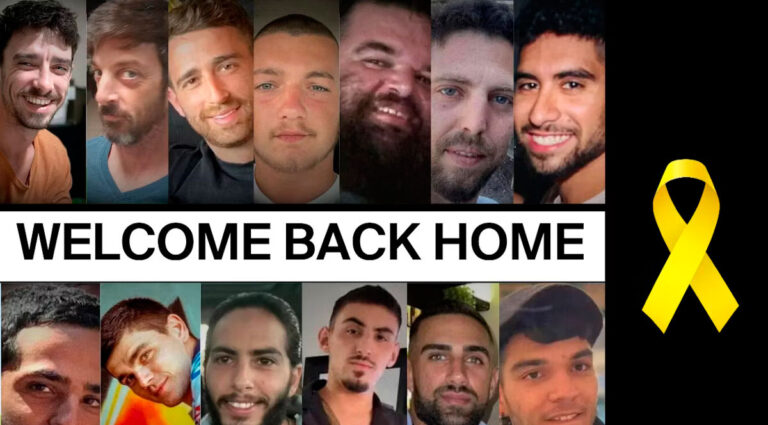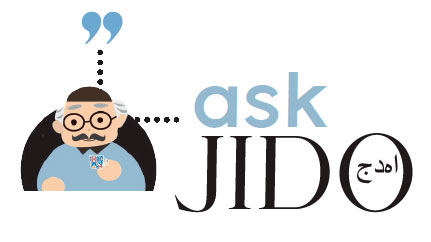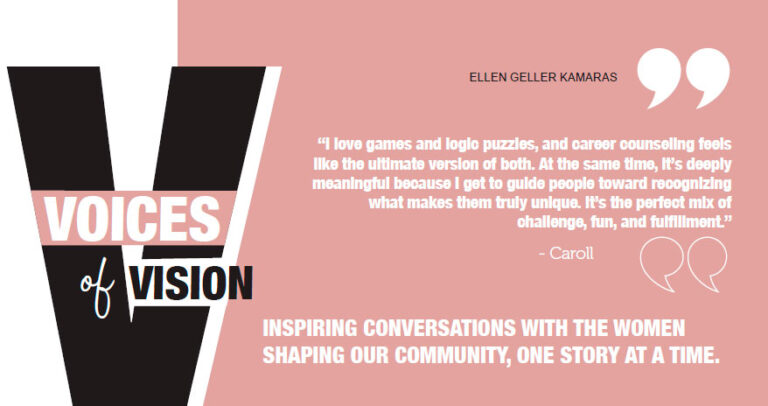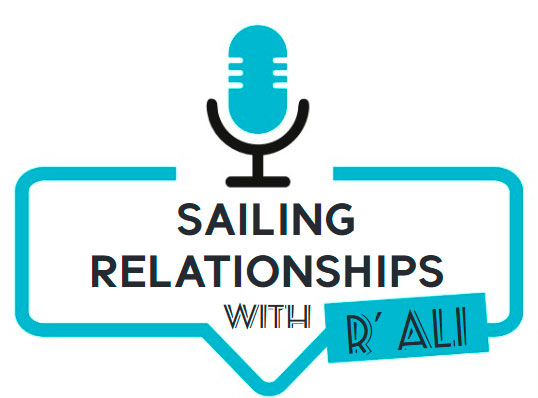Ellen Geller Kamaras
Can families join forces to perform a digital detox?
As a huge supporter of family meetings, family projects and family staycations, I say YES resoundingly. Let’s disconnect to reconnect.
A digital detox is a block of time during which one (or many) abstains from using electronic devices connected to the Internet, primarily smartphones and computers.
Establish technology family guidelines together with your children to restore positive and meaningful family interaction. This does not mean throwing your phones away. The rules for your children should be age appropriate, and you can explain the disconnect idea to your children according to their understanding.
There are so many benefits to unplugging for both adults and children. Unplugging means more time to be in nature and do outdoor activities, thereby improving your physical and mental health. Less screen time and less blue light leads to better rest and sleep. Limiting time spent on phones and computers can improve concentration and productivity. And what about having real-life connections and interactions?
Parents, shutting your smartphones for allotted time periods will reap enormous perks and allow you to be present for your children, your significant others, and other important individuals in your orbit.
It will increase your kids’ emotional intelligence (EQ) and give them valuable tools to navigate challenges and relationships. Being emotionally intelligent is key to how one reacts to what life throws. Unplugging from your phone will help your kids feel that they are important to you and will help them to develop resilience.
Are You up to the Family Digital Detox Challenge?
The objective is to ensure we have meaningful interactions and to do activities that are fun, healthy and educational and don’t involve screen time or electronics. It doesn’t mean we have to go cold turkey on electronic devices altogether.
There are lots of resources on collective digital detox. Below are some of the easiest and successful steps to get you moving in the right direction.
Let’s start with a family meeting. Parents, please do your due diligence and get on the same page with your spouse before you meet with your children.
Remember the golden rule – avoid do as I say not as I do. Moms, dads, and caregivers need to be role models and completely participate in the family unplugging. If children see their parents glued to their phones, they view their parents as hypocritical or setting double standards.
Dr. Katie Hurley, DSW, LCSW, is a child and adolescent psychotherapist, parenting educator, public speaker and writer. Hurley reports that her teenage clients say that their parents consistently criticize their children’s phone use but don’t curb their own use. “Hypocrisy aside, teens tell me that it’s frustrating when their parents can’t give them their focus. Frustrated with their parents over lack of attention, teens curb negative emotions by watching videos on social media.”
Parents frequently have the same complaint, that their kids are glued to their phones and don’t react when parents try to engage them. Parents also turn to their own phones when rejected by their children. Both kids and parents get stuck in an endless loop of fractured communication and hurt feelings because technology steals focus.
Dr. Hurley’s solution is for families to look at the problem from both sides and to see how technology is stealing opportunities for quality time and positive interactions. Both parents and children need to adjust their technology habits to restore trust and positive communication. She emphasizes that it’s our parental responsibility to be a good role model for our children.
Choose a quiet place for a family meeting and make sure all will be able to be fully present:
That means no looming stressful work deadlines for parents or big exams to study for or important sports events for kids. Be prepared, positive, and authentic. Positivity can be contagious.
Invite your children to brainstorm with you about unplugging and listen to and acknowledge their ideas: Explain your reasons and goals for a detox. You will need your children who are old enough to understand to buy into what you are planning.
Reach a consensus on a game plan: Can you agree that there will be no phones during dinner time? Developing realistic and achievable goals will lead to success.
Define which electronic devices are included. Are smart phones, iPad, ear buds, and tablets all off the table? If an area or room is tech free, are there specific on and off hours or are devices always off limits?
Sabbath observers are very fortunate that they already practice digital detox for 25 hours weekly. And on chagim too!
Consider carving out chunks of time each day to unplug and get back to nature. It doesn’t only have to be on Shabbat.
Set Age-Appropriate Limits
A teenager will do better if you establish guidelines for social media, texting, and gaming versus banning every smart phone app. When teens have skin in the game and help decide on a daily screen cap, they are more likely to adhere to that limit. Limits such as: devices shut down at 8pm create boundaries that work. Pediatricians recommend that small children need in-person stimulation. Short daily video calls for toddlers with grandparents are fine. The American Academy of Pediatrics states that screen time for children aged two–five should be limited to one hour daily.
Stimulate and connect with your babies and toddlers. While taking walks when the little ones are in strollers or carriers, we can sing or talk to them. If we are glued to our phone screens, that means we aren’t engaging with those babies or toddlers and are missing valuable bonding and growth opportunities.
In the first 10 to 12 months, babies enjoy being talked to. They move their heads and smile and move their arms and legs in response. They listen when you sing songs and start to understand when you say their name. It’s never too early to start reading books to them and help build their vocabulary.
Jointly Establish Technology-Free Zones
In addition to coming up with allotted screen-free times, it’s beneficial to designate tech-free zones where electronic devices are not allowed. Experts suggest that it can be a specific room or space within a room such as a cozy corner for chilling, reading, or crafts.
In your screen-free zones, encourage non-tech activities such as board games, reading, or old-fashioned conversations.
On Friday nights after Shabbat dinner, we enjoyed a reading hour when our kids were young. Why not set a reading time after homework is done during the week? Younger kids enjoy having a book read to them before bedtime.
To facilitate digital detoxing, agree to turn off non-essential push alerts and notifications.
Other Family Detox Tips
Re-visit activities your family enjoys doing together that don’t involve technology.
Offer a new craft, creative outlet, sport, or hobby to your child versus a movie or screen time.
As a family, plan device-free outings as a weekend activity (special food is always a welcome treat) or as a reward for unplugging.
Acknowledge and celebrate wins of family members who are successfully unplugging and learning to use technology with intention. Reward your children with a treat or a visit to the
aquarium or craft store. Young children love getting a gold star on a chart hung up in the kitchen, when they achieve a win. You can turn your detox into a fun challenge by tracking screen hours and rewarding milestones.
Practice active listening skills together. Maintain eye contact while you talk to each other, ask follow-up questions and reflect on what you heard.
Create working communication systems. There are exceptions. Parents may have to deal with pressing work issues and kids may get notifications from school. Make a follow-up plan to continue the conversation and be clear when you set boundaries around work.
Encourage your kids to give up social media on their own. Studies indicate that young people spend long hours on social media platforms mostly because of FOMO, fear of missing out. If their friends are on there, they want to be there, too. However, some feel this constantly having to be tuned in as a pressure and they would like to find a way out. You can help them to do this! The good feelings that come with being less connected aligns with research that individuals who deactivate their Facebook accounts are less anxious, less depressed, and happier.
Communities are encouraging parents to create new norms. For example, 120,000 parents nationwide have committed to “Wait Until 8th,” signing a pledge to withhold smartphones until the end of eighth grade. (Parents may allow their children to have a basic phone that just calls and texts and still sign the pledge.) There is also an app called NOMO, No Missing Out, where users join challenges to reduce their social media use and are rewarded with real prizes. Kids learn to replace screen time with real-world activities.
The Frisch High School in Paramus, NJ, has implemented a “bell-to-bell” smartphone ban, which prohibits the use of personal digital devices from the first bell to the last. Students may not use phones, smartwatches, or earbuds during instructional time. The school has promoted this policy with humorous social media about the change.
Family members can reconnect and prioritize having fun together when they curb tech overuse in a positive way. I’d love to hear about your family detox. Please contact me at ellen@lifecoachellen.com.
Ellen Geller Kamaras, CPA/MBA, is an International Coach Federation (ICF) Associate Certified Coach. Her coaching specialties include life, career, and dating coaching. Ellen can be contacted at ellen@lifecoachellen.com (www.lifecoachellen.com).




